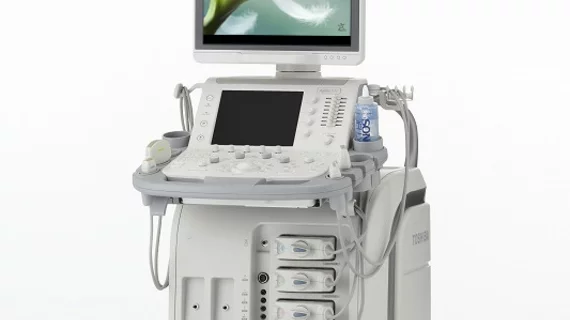Wide adoption of primary-care POCUS deemed feasible but not immediately advisable
Twenty primary care providers changed half of their tentative diagnoses after using point-of-care ultrasound in 574 recruited patient cases over a one-month period.
On the other hand, the technology supported the physicians’ initial diagnoses nearly 90% of the time.
The study was conducted in Denmark and is running in BMJ Open.
Dr. Camilla Aakjaer Andersen of the Center for General Practice at Aalborg University and colleagues ran their prospective observational study with an online questionnaire completed by the 20 doctors—called general practitioners or GPs in Denmark—before and after POCUS.
The researchers found POCUS was tapped with a median frequency of 8.6% of all patients seen. Many different organs were imaged and more than 100 tentative diagnoses checked. The median time taken up by ultrasound was five minutes.
Rounding out the team’s key findings: POCUS brought about a change in the management plan for 50.9% of patients, including an absolute reduction in intended referrals to secondary care from 49.2% to 25.6% and a change in treatment for 26.5% of patients.
Andersen et al. acknowledge several limitations in their study design. One was the possibility of selection bias, as the participating GPs probably comprised a sampling of docs with higher-than-average interest in ultrasound technology.
Another was that study registrations were time-intensive, resulting in fewer qualified patient cases than the team expected.
Thirdly, while POCUS utilization changed diagnosis, plan and/or treatment for most patients, the project did not follow patients to see if these changes improved care quality or undermined it.
Still, given the fast scans and reads along with the resulting care-path changes, the use of POCUS is “feasible in general practice despite differences in ultrasound equipment, experience, educational background and choice of examinations,” the authors conclude.
“Overall, using POCUS altered the GPs’ diagnostic process and clinical decision-making in nearly three out of four consultations,” they underscore. “The potential high impact of POCUS underlines the need for further research to support an appropriate implementation of POCUS in general practice.”
The study is available in full for free.
Related POCUS Ultrasound Content:
VIDEO: Point-of-care ultrasound systems at ACC 2022
Radiologists must ditch ‘illusion’ of handling all POCUS exams, work with clinicians on path forward

